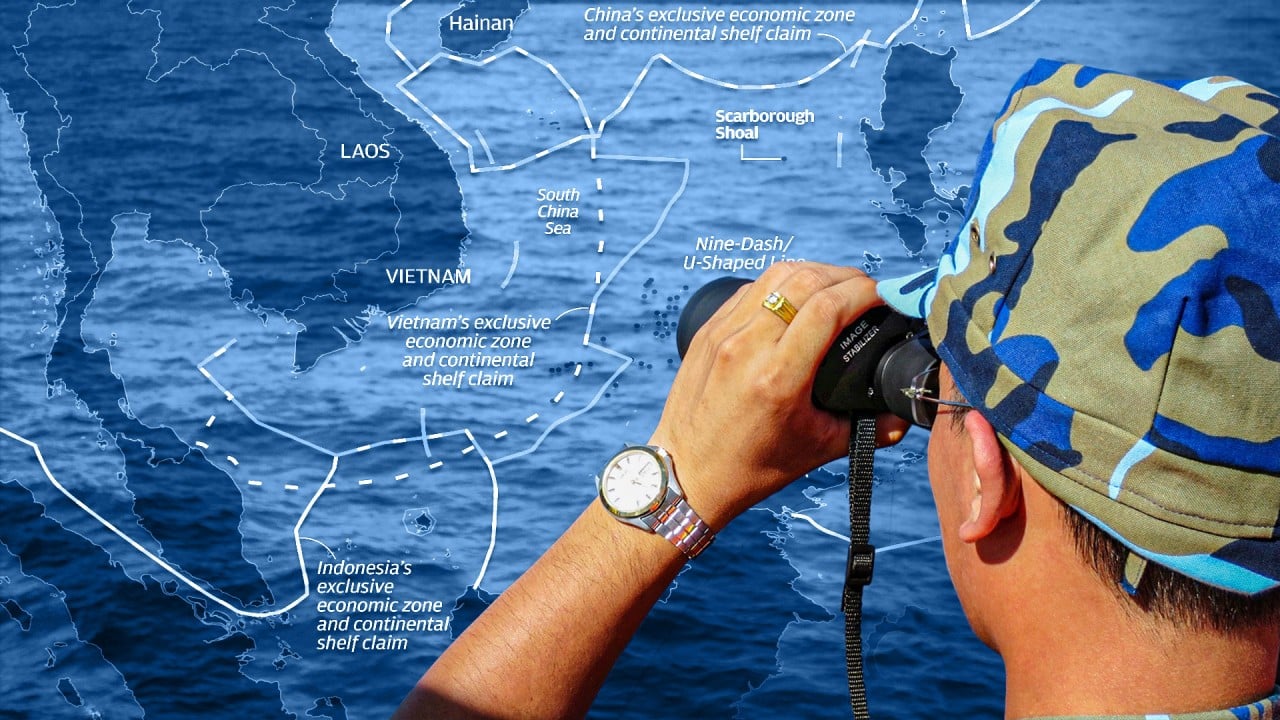„So if there’s one country that we should hold responsible for our coral reefs for environmental damage … it would only be the People’s Republic of China,” said Darriela.
“Now you are going to ask me who we suspect of illegally reclaiming the small islands [Pag-asa’s cays] … There is no other country that we can point to, no – it’s only the People’s Republic of China.
Some countries with overlapping claims to the region, including China and Vietnam, have turned shoals in the Spratlys into artificial islands that they have used to build airstrips, military facilities and ports.

In March, when Anticamara’s research team conducted its initial investigations, journalists witnessed Chinese coast guard and warships conducting risky maneuvers against the research team’s vessel.
Coral reefs in other parts of the country are also suffering degradation, the Anticamara group said at a press conference on Saturday.
The report, “Deep Blue Scars: Environmental Threats to the South China Sea,” released late last year by the Asia Maritime Transparency Initiative (AMTI) of the Center for Strategic and International Studies, notes that over the past 10 years, dredging and landfilling activities in the Philippines have caused significant coral reef damage in the Philippine Sea.
According to the report, from late 2013 to 2017, China’s dredging to create artificial islands disturbed the sea floor, creating clouds of abrasive sediment that killed nearby marine life and overwhelmed the ability of coral reefs to repair themselves.
The South China Sea is home to 571 of the world’s 1,683 reef-forming corals and 22 percent of 3,790 fish species, the report noted.
„The results show that China has destroyed the most reefs by burying, dredging and filling approximately 4,648 acres of reefs. AMTI estimates that approximately 16,535 acres of reefs have been damaged by Chinese giant clam harvesting.
The ATMI report urged governments embroiled in maritime disputes in the South China Sea to pay equal attention to the rapid degradation of the region’s marine environment.
„Damage is directly caused by human activities permitted, supported and initiated by coastal states. Therefore, coastal states must be at the center of efforts to stop destructive practices and protect marine ecosystems before it is too late,” the study states.
„China has played the largest role, destroying or severely damaging at least 21,183 acres of coral reefs — also through island expansion and massive shellfish harvesting. It also dominates the industrialized overfishing that has decimated South China Sea fisheries.
Last month, the Chinese embassy in Manila asserted its sovereign rights over Pak-Asa Island, which it refers to as Jongye Dao, and accused the Philippines of „illegally occupying” the area.

China’s reclamation activities since 2014 and its naval warship swarm that began in 2017 are the biggest causes of marine environmental destruction, said Jay Patongbakal, director of the University of the Philippines for Marine Affairs and Law of the Sea.
„So we can see the lasting effects of the damage. Their maritime warships anchoring in fish habitats are also causing damage,” he told Asia This Week.
As for the long-term environmental impact, Patongbegal said it could take years or even decades for coral reefs to recover. „If the reefs can’t recover and the accumulation of damage continues, it’s only going to get worse.”
Batongbacal said the damage would have serious economic implications, adding that about 27 percent of the Philippines’ fish supply comes from contested waters.
„If they destroy the habitats that allow fish to regenerate, in the long run, the value they contribute to the national economy and food security will be lost,” he said.

In September, Philippine Senator Riza Hontiveros filed a resolution calling for China to take responsibility for massive coral harvesting in the West Philippine Sea and seek payment from Beijing for environmental damage.
The West Philippine Sea is part of Manila’s South China Sea, which defines its territorial sea and includes its exclusive economic zone.
“If we force China we will get billions. They take away the livelihood of our fishermen and even destroy our natural resources. If China can pay off all the debts owed to the Philippines, it will definitely help the economic crisis we are facing,” he said.
Hontiveros cited that the Philippines loses about 33.1 billion Philippine pesos (US$577 million) annually to coral reefs damaged by China’s restoration activities.
„We are entitled to payment,” he said.

. „Gracz. Namiętny pionier w mediach społecznościowych. Wielokrotnie nagradzany miłośnik muzyki. Rozrabiacz”.

